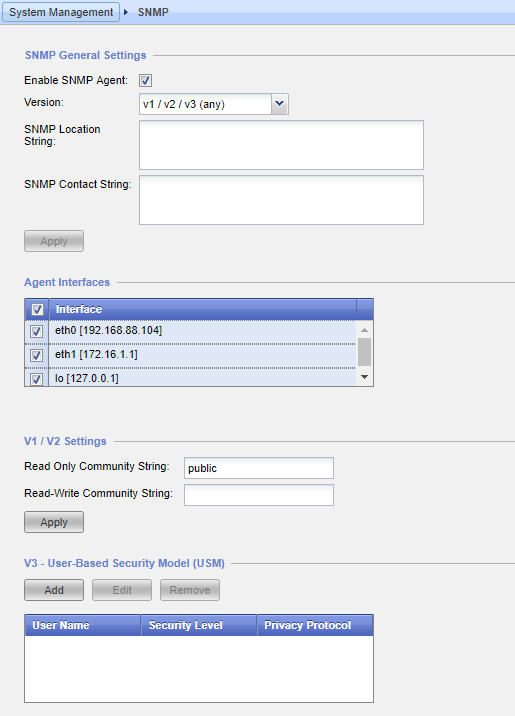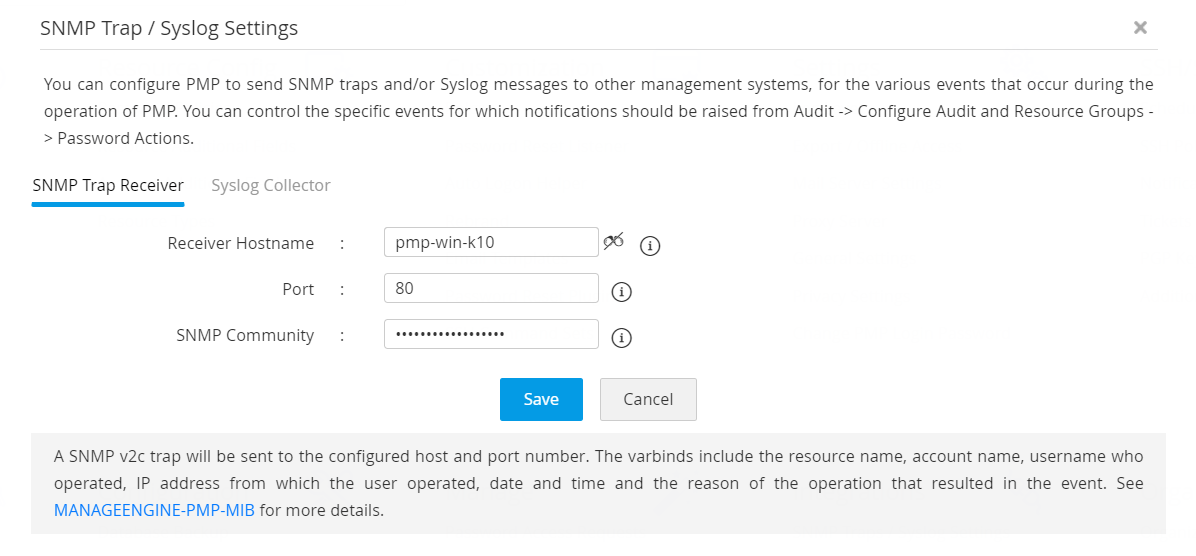

- #How to setup snmp trap receiver how to#
- #How to setup snmp trap receiver manual#
The way the trap receiver sensor works is that the error clears and goes green as soon as the next polling cycle happens, i.e. If I replaced the single sensor with one sensor for each device, that could show me the origin of the alert, but it still wouldn't identify the trap (and it would be a bit of a pain to set up).Īlso, a second question about the SNMP trap sensor: Is there any way to insert OIDs into the notification message so that it's obvious what device it's coming from and/or what the trap is? "0.01 #/s (Errors) is above the error limit of < 0.01 #/s" However, the error message that is generated is generic, either the default It works as expected and receives SNMP traps from any device in the tree, which is what we want.
#How to setup snmp trap receiver manual#
Click the General tab, in the Startup type list, click Manual (you can also select Disabled), then click OK.I have an SNMP trap receiver sensor set up at the top of my device tree, on the local probe device. If the service is in the list, right-click the service, then click Options. In the Services list, look for the SNMP Trap Service. To verify that the SNMP Trap Service in not running, click Start > Control Panel > Administrative Tools > Services. In the Services list, look and select SNMP Trap Service. Click Start > Control Panel > Administrative Tools > Services. We also need something to receive the notification, and respond. Generating traps is only half of the battle. Configuration of SNMPv3 notifications is described fully on a separate page: Processing Notifications. To disable the Microsoft SNMP Trap Listener: SNMPv3 adds security to the SNMP protocol and is a safer way to receive notification data.  To collect data on unsolicited events as well, select Accept Unsolicited SNMP Traps. Select Listen for messages on port and enter a port number to enable the SNMP Trap Listener (default port is 162). Part 2 of 2 to learn about the other option, which allows you to set up multiple receivers on a single workstation. You can also read Running snmptrapd on a host allocated to receive snmp traps. This topic concerns the first option, which allows you to set up a single receiver serving traps from multiple agents. You can run the snmptrapd service on a workstation, or in a docker container.
To collect data on unsolicited events as well, select Accept Unsolicited SNMP Traps. Select Listen for messages on port and enter a port number to enable the SNMP Trap Listener (default port is 162). Part 2 of 2 to learn about the other option, which allows you to set up multiple receivers on a single workstation. You can also read Running snmptrapd on a host allocated to receive snmp traps. This topic concerns the first option, which allows you to set up a single receiver serving traps from multiple agents. You can run the snmptrapd service on a workstation, or in a docker container. #How to setup snmp trap receiver how to#
Select SNMP Trap, then click Configure. The SNMP Trap Listener Configuration dialog opens. This topic concerns the first option, which allows you to set up a single receiver serving traps from multiple agents. This topic describes how to configure an SNMP receiver environment. In the WhatsUp Gold console, select Configure > Program Options. Important: The Microsoft SNMP Trap Listener must be disabled to enable the WhatsUp Gold SNMP Trap Listener. 
Important: The SNMP Trap Listener cannot be enabled through the web interface it must be enabled in the WhatsUp Gold console. There is one fundamental difference between SNMP INFORMs and TRAPs: TRAPs Sent by an application or daemon but no response is sent or expected by the notification receiver. (In SNMPv1, there was only TRAPs SNMPv2c and SNMPv3 support INFORMs too). SNMP supports two types of notifications: TRAPs and INFORMs. The SNMP Trap listener must be enabled to collect data for the SNMP Trap Log report. SNMP INFORMs vs SNMP TRAPs Notifications.







 0 kommentar(er)
0 kommentar(er)
